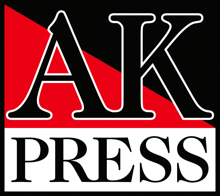Recommended Radical Readings on Los Angeles
Editor’s note: As part of our ongoing “Recommended Reading” series, we asked Laura Pulido, an activist scholar
and geographer at the University of Southern California, to share her thoughts with us about the best books on Los Angeles from a radical perspective. Pulido authored the very excellent Black, Brown, Yellow and Left: Radical activism in Los Angeles and co-authored the forthcoming A Guide to the People’s History of LA (which you can get a taste of here).
This is what she told us:
* * *
While Los Angeles has always attracted a good deal of attention, it wasn’t until the 1980s that it actually became a focus of serious study. While writers and scholars from many quarters began publishing on Los Angeles, several academics dubbed this growing body of work, “The LA School.” Although the title “the LA School” has generated plenty of debate, one of the indisputable central texts of this era is Mike Davis’s City of Quartz: excavating the future in Los Angeles (1991). This was one of the first books to offer a dramatically different historical perspective on Los Angeles. Not only does Davis attempt to tell history from the bottom-up, but he directly takes on the dominant economic, political, and cultural players in the city, writing very much within a noir tradition. Not since Carey McWilliams has Los Angeles received this kind of treatment. Another wonderful book is Gerald Horne’s The Fire This Time: The Watts Uprising and the 1960s (1995). Horne is a committed historian who leaves no stone unturned in his detailed exploration of the Watts uprising. In addition, Horne provides a larger picture of the national and regional social forces that were impacting South LA, and a scathing critique of the Los Angeles Police Department and the City’s response to the civil unrest.
More recently, there have been a series of books which expand on this tradition. Perhaps not too surprisingly, some of the most radical scholarship continues to be focused on South Central. Joao Costa Vargas’s Catching Hell in the City of Angels: Life and Meanings of Blackness in South Central Los Angeles (2006) examines different facets of African American life in South LA. Costa Vargas is an anthropologist who does an amazing job of treating his subjects with great respect and dignity. He doesn’t gloss over the ugly stuff, but manages to convey the deep humanity of all the people he writes about. Ruth Wilson Gilmore’s Golden Gulag: Prisons, Surplus, Crisis and Opposition in Globalizing Galifornia (2007) offers a different perspective by focusing on the macro-level economic and political forces shaping California (including Los Angeles) which have led to the development of the world’s largest prison system. Finally, if I may be so bold, I would like to include my own book, Black, Brown, Yellow and Left: Radical activism in Los Angeles (2006). In this book I examines the Third World Left in Los Angeles in the 1960s and 70s by comparing radical activism among Japanese Americans, African Americans, and Chicanas/os. Besides the focus on radical political activism among people of color, I also think its worthwhile for its comparative angle.
Scholars have continued generating a wealth of scholarship about Los Angeles – but these books are an excellent starting point for anyone interested in a critical take on the City of Angels.
